#salii’qi
Explore tagged Tumblr posts
Text
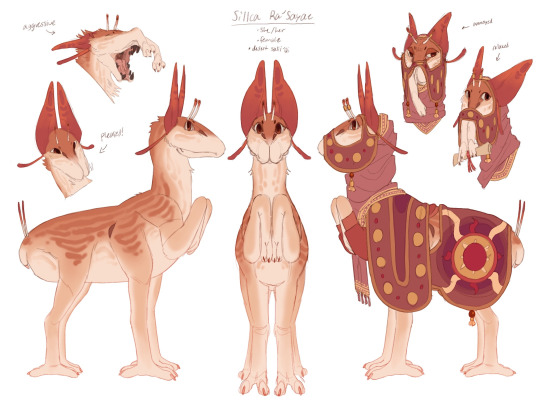
First named Salii'Qi character :) her name is Sillca and she lives and travels with her rancher girlfriend. Sillca is less hands on and makes and embroiders clothes with hides and fibers found in the desert plants. Oh, you can also draw her for Artfight if you'd like <3 https://artfight.net/character/3465357.sillca-rasayae
#shes my daughter and i love her so#sillca ra'sayae#salii’qi#saliinthia#alien#spec evo#speculative evolution#speculative ecology#speculative biology#sophont#xenobiology
444 notes
·
View notes
Text

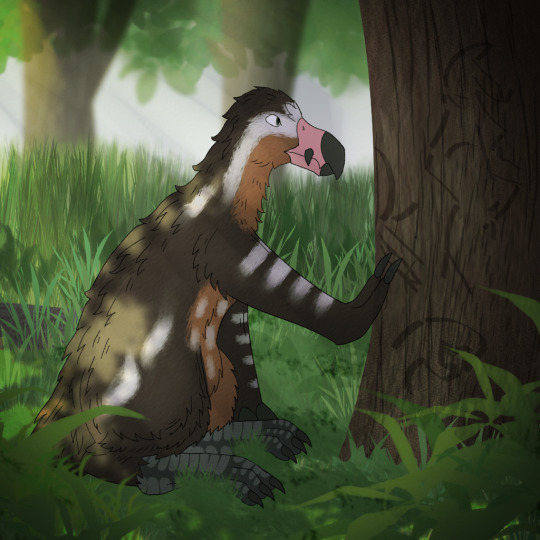

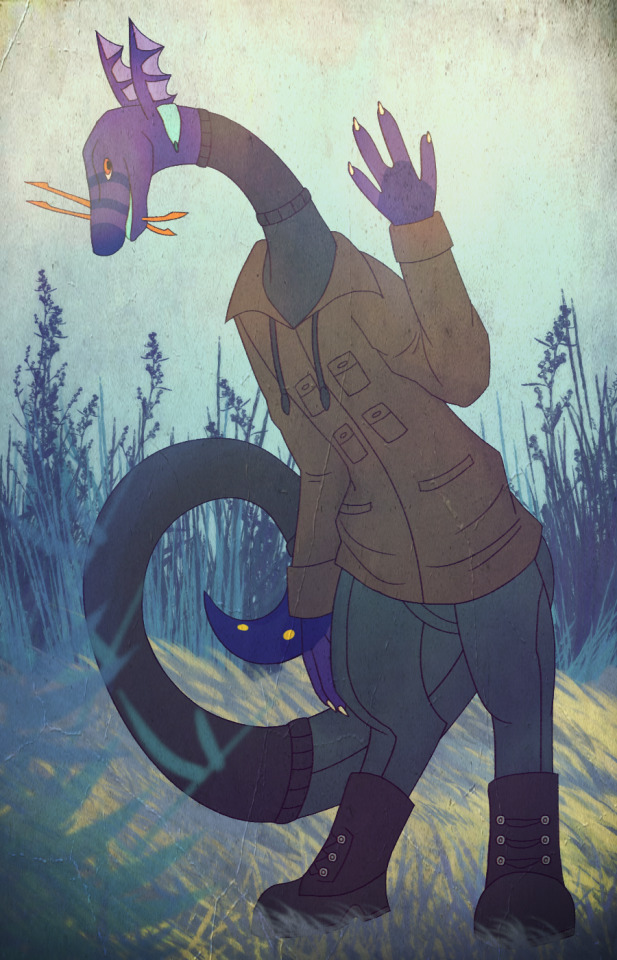
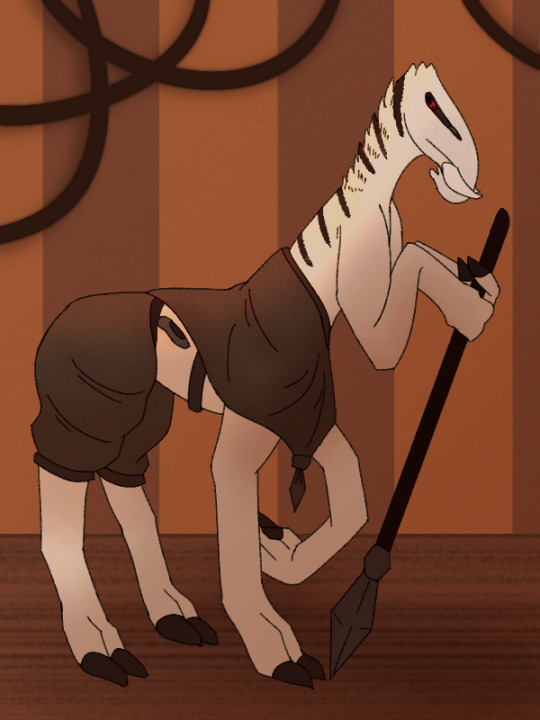
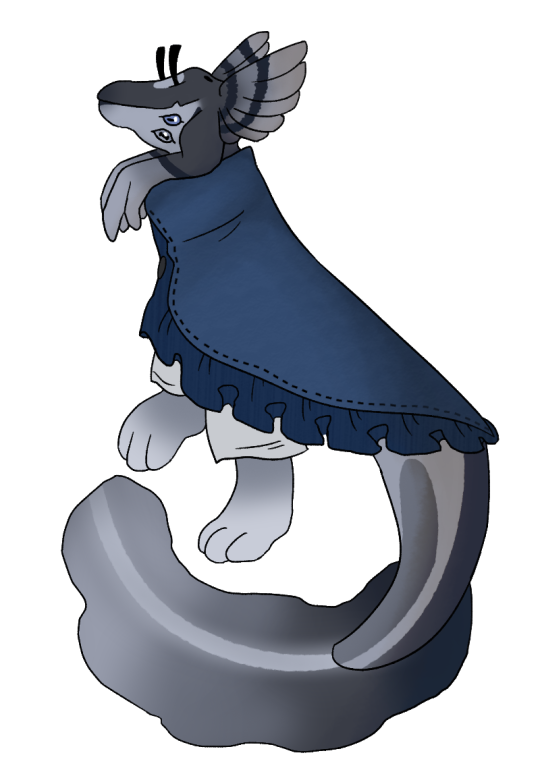
This year's specbio themed ArtFight attacks!
Yarin (RTTS centaur) belongs to @shuttlecarrier!
Bark (Gravedigger) belongs to Arapaima!
Sillca (Salii’qi) belongs to @saliinthia!
Aroo (hexapod) belongs to felisatyr!
Sunsto (RTTS centaur) belongs to XyonDew!
Aggee (HmnGnn) belongs to @mydude-myguy!
14 notes
·
View notes
Text
Desert folk are nomadic, though during the mating and birthing season most clans come together to settle in riverside towns. These times are always full of creativity and partying, as well as a time of relaxation for most. The desert folk celebrate their collective religion, worshipping the twin suns. They share stories and writing, feast, make clothing, dance, and engage in artistic and hedonistic activities for the duration of mating season. After the season ends, most clans leave the towns to resume their livestock’s feeding rotation, but some clans stay behind in the riverside towns to tend to the buildings and grow crops in the fertile soil.
After the season, work begins once again. The desert folk travel in a rotation unique to each family clan, feeding their livestock on various desert plants. The cow-like animals produce crop milk, hair, hide, and meat. To protect their herds, mature members of a clan carry a rifle. These guns are basic and equivalent to our own blackpowder rifles of the past. They are powerful but relatively inaccurate and slow to reload, so they are used as a last resort or to scare off skittish predators.
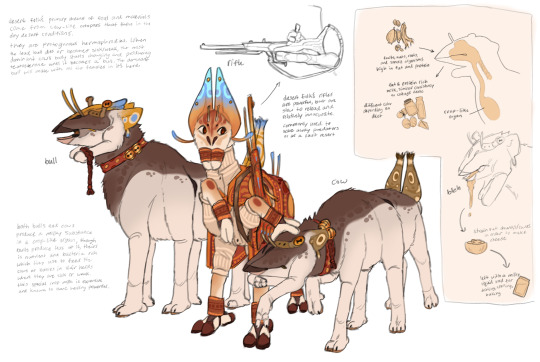
These livestock are the most widely produced due to their hardiness and the variety of materials they produce. Both cows and bulls produce a milky substance using a digestive organ similar to that of Earth’s birds. Bulls produce less of this liquid, but it is more nutrient dense and bacteria dense to help the bull’s cows or calves gain strength or work through a sickness. Bull crop milk is known for having healing properties and the small amounts of it and importance for the herd’s health makes it expensive.
Crop milk is obtained by massaging the crop of a cow or bull until it regurgitates it. It takes practice to feel the crop and figure out if the texture is ready to be consumed. This substance is cottage cheese consistency, and is separated into the curds and liquids. Curds are used to make cheese, while the liquid is used for drinking and cooking.
These animals are protgynous hermaphrodites, meaning that the most dominant cow in the herd’s body will start changing and producing testosterone until she becomes a bull that can take over when the old bull is sick, weak, dead, or otherwise absent. Bulls will protect their cows with ferocity, and mate with each one during mating season.
When a cow gives birth, it is to 5-6 live grub-like pupae that cling to her back and consume crop milk. During this time, many larvae will die until 1-2 are left. When the grubs are ready to pupate, the mother consumes them and stores them in her crop until they are finished pupating, and during this time the cow does not eat. After the babies are finished pupating, the mother regurgitates them, and they can finish growing to their adult forms. She will continue feeding them crop milk until they can eat solid matter on their own.
#saliinthia#salii’qi#desert folk#alien#speculative biology#xenobiology#spec evo#sophont#speculative ecology#speculative evolution#alien cows
188 notes
·
View notes
Text
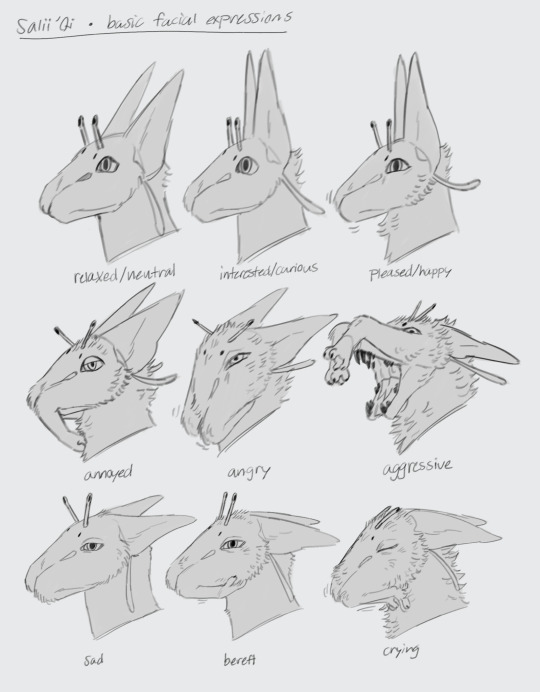
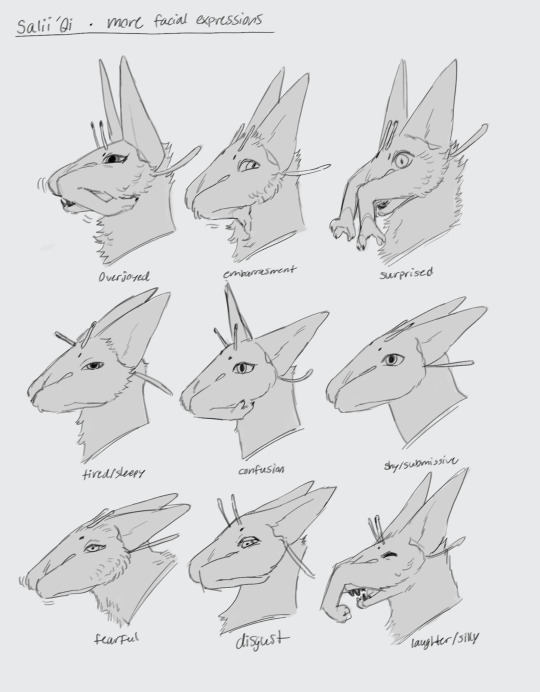
Salii’Qi expressions
Salii’Qi expressions are similar to our own, but utilize the ear flaps, ear tendrils, eye stalks, pedipalps, and fur position to express emotion. Puffed up fur usually will show up with any strong emotional reaction, especially aggression or surprise. Forward facing ear flaps and eye stalks typically show curiosity, intrigue, or happiness. what isn’t shown here is body language. Body language is not as expressive as our own, save for the forearms. Body language shows in the posterior antennae, limb position, and fur position. antennae usually move with eye stalks in expressing emotions, and limb position like in humans can show how engaged an individual is with a conversation or activity.
#salii’qi#saliinthia#spec evo#speculative worldbuilding#speculative evolution#speculative biology#alien#xenobiology#sophont#worldbuilding
235 notes
·
View notes
Note
I’m already in love with these guys hell yeah
they love you too, random citizen!

#saliinthia#salii’qi#ask#alien#speculative biology#xenobiology#sophont#spec evo#speculative ecology#speculative evolution
63 notes
·
View notes
Note
Question! How tall is Sillca? Roughly
Desert folk are about 4-5 feet, with females being taller, so Sillca is about 4’9
#asks#sillca ra'sayae#alien#speculative biology#xenobiology#saliinthia#salii’qi#spec evo#sophont#speculative ecology#speculative evolution
9 notes
·
View notes
Note
Oh thank you! Definitely didn't need her height for an artfight thingy 🤫
AHHHHHH JUMPSCARE
#ask#sillca ra'sayae#silly#alien#speculative biology#xenobiology#saliinthia#salii’qi#spec evo#sophont#speculative ecology#speculative evolution
6 notes
·
View notes
Text
The Salii’Qi - Saliinthia’s Sophonts
The primary sophont species residing on the warm, Earth-like world of Saliinthia are the Salii’Qi, a race of strange mammalian-insect creatures. They have dispersed into four main subspecies, two sedentary groups who live in the forests and islands respectively, and the two nomadic groups who call the grasslands and deserts home. Through this blog I will delve deep into their various cultures, religions, technology, and day to day lives living on Saliinthia!
Basic Biology
The Salii’Qi evolved from intelligent, largely carnivorous pack hunters, with the grassland subspecies being the oldest ones. They have intelligence equivalent to that of human beings, though tending to be better at problem solving. Their mammal-like biology gives them warm blood and dense bones, though their skeleton is derived from a graphite filled exoskeleton similar to that of insects, that was slowly internalized over the course of millions of years. They are egg layers, and have a complex life cycle not unlike that of an Earth caterpillar or beetle.
Salii’Qi have three sets of eyes, two are simple and detect movement and light only, while the third pair is complex and has an expanding and contracting pupil like Earth’s vertebrates. They hear through bright colored ear flaps held up by cartilage, able to swivel and pin to show emotion or focus in on certain sounds.
Salli’Qi have four pairs of limbs, two are used for walking while the other two are used for physical manipulation. One pair of limbs are attached to the skull. These “arms” evolved from pedipalps, now used for eating and handling weapons or other objects. The pedipalps are weaker than their forearms, so they usually use those for heavier work like lifting large objects. With the evolution of centaurism in these creatures, they lost a lot of flexibility in their backs, and so can no longer keep their forearms on the ground for long periods of time.

The skeleton of the Salii’Qi have a dark color due to the high amount of graphite present in their bones, with black teeth stronger than ours. Their bones are dense and very similar to ours, although the ribs are free floating and connected with cartilage. Some of the vertebrae located near the end of the body are fused, which aid in supporting the back. Ancient relatives had a connected skeleton below the skin, which resembled that of insects. To allow for more flexibility and dexterity, those bones have now been reduced to cover less area.

Salii’Qi have organs very similar to ours, but have a unidirectional respiratory system. They breathe in through two spiracles beneath their eyes, and after passing through the lungs, it is exhaled through the two spiracles placed behind the first pair of leg’s shoulders. This allows faster replacement of oxygen in the bloodstream, fueling their insect-like biology.
Their digestive system extremely similar to ours, the only notable difference being the tiered stomach, which allows for tough protein rich plant matter to be digested.
Salii’Qi have a gonochoric reproductive system, meaning they have two sexes. Both sexes have bright colored ear flaps and antennae, but during the spring the male coloration deepens for mating. Females are slightly larger than males, and have duller colors. Depending on the culture, females may take multiple male partners during the mating season, or only keep one partner for their whole life.
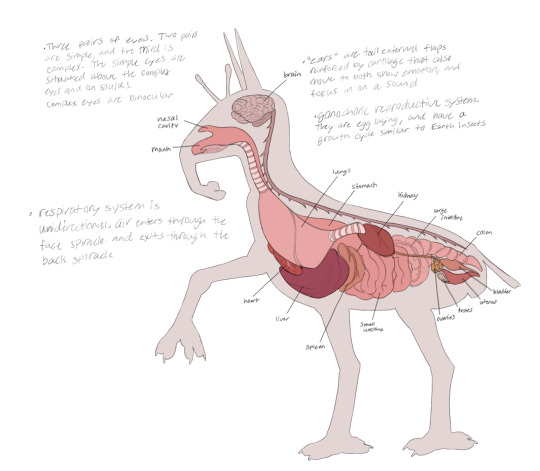
Subspecies
The Salii’Qi are spread over four main subspecies, and are regional variants. As mentioned before, the nomadic grasslanders were the first successful variants, which then radiated into the forest, desert, and island subspecies. As the names imply, they live in settlements and groups around specific biomes they are best adapted to.

The foresters are mostly a sedentary group, and also physically the largest. They eat the most fruit and plant matter out of any other , and have learned how to farm and selectively breed crops. They have long, thin limbs for reaching up into the vegetation, and upturned simple eyes to see differences in the shadows above. They are skittish and try too keep to themselves, but enjoy trading their crops with other groups. Grasslanders are nomadic, but have specific areas they return to during nesting season. They follow the herds of large grazers who roam the grasslands, using their good stamina to their advantage. They are a proud and strong group, seen as kind and humorous. They are artisans, creating unique goods and clothing out of hides and pelts for trading with other groups. Desert dwellers live in smaller groups, and instead of hunting, they primarily ranch and travel with herds of domesticated livestock. Desert Salii'Qi forage desert fruits, roots, and other plant matter before a harvest. They travel to feeding grounds during the fall and winter, but return to fertile river communities during the spring and summer where plants for livestock flourish along the banks. During this time, the desert Salii-Qi raise their children to take on their next journey. Islanders are small, social Salii'Qi who settled on an archipelago millions of years ago. They are the most well adapted group and the second oldest subspecies. Islanders have partially webbed feet, seal-like fur, powerful limbs, and higher back spiracles which makes it easier to spend time in the water. They primarily feed on fish and island fruit which they've selectively bred. Islanders mainly spearfish, but also use boats for fishing and trade. They routinely voyage to the mainland to trade goods, and some have even settled on the mainland shores.
#salii'qi#saliinthia#spec bio#speculative biology#biology#xenobiology#alien#speculative fiction#speculative ecology#aliens#sci fi#evolution
205 notes
·
View notes